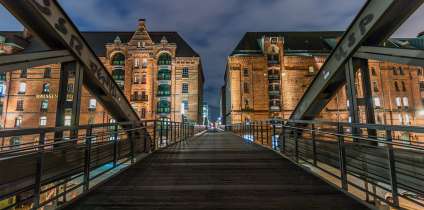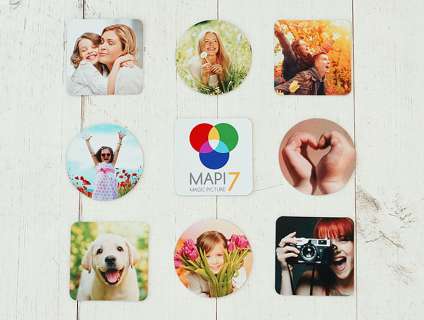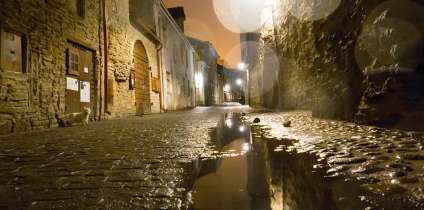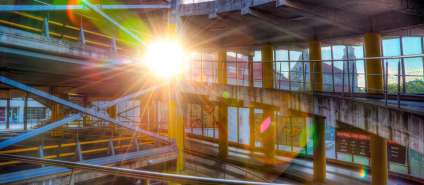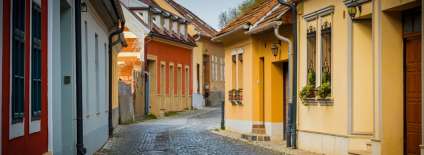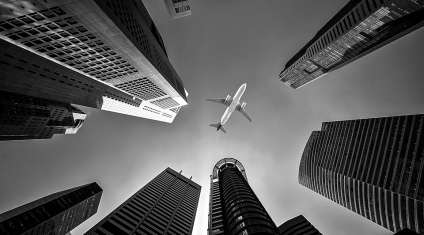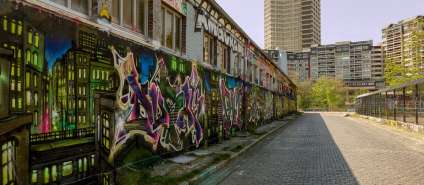How to photograph urban landscapes
Published: 19.05.2020
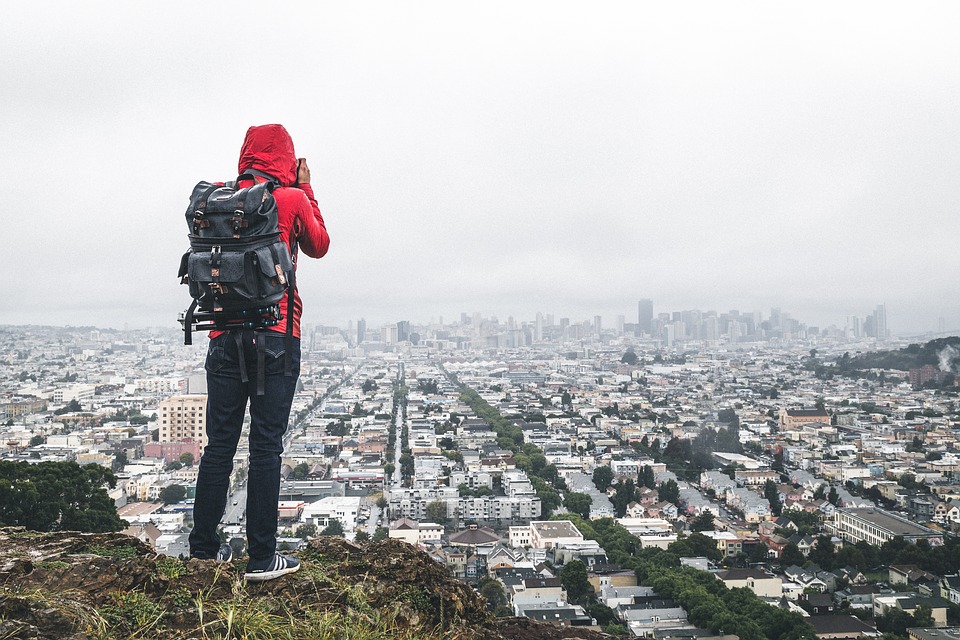
Landscape photography has a lot of fans. The grandeur and scale of the images amaze the human mind and evoke a desire to pick up a camera and start shooting. We will tell you how to photograph landscapes, starting with the popular genre of urban landscapes.
It is not necessary to leave the city in search of landscapes. The genre of landscape photography is also available to residents of megacities. Wide open perspectives are not only mountains, sea, and endless fields. Skyscrapers, old neighborhoods, and other artificial structures are objects of urban landscape photography.
How to properly photograph urban landscapes
Urban landscape is a reflection of the city's personality. This genre reveals the individuality of a metropolis or a provincial town. It is a kind of overview, a "family portrait," where the buildings and structures act as family members.
The main rule of shooting urban landscapes is the minimal presence of people in the frame. In traditional landscape photography, the main subjects are seas, mountains, plants, and the sky. In urban photography, it's buildings, bridges, and streets. As soon as you include people in the frame, you turn your image into street photography.
To get the maximum benefit from the place where you plan to shoot, first study the area. Wander around this area at different times of the day. Inspect objects from different angles.
If you are planning to shoot urban landscapes at night, it is better to scout the location during the daytime.
Create a Light album from your cool photos. You don't need to print the photos separately for this. We will print your photos directly onto the pages of the Light album. Upload your images to the free editor Mapi7 and create a themed Light album. You can upload photos from your phone.
Shooting time.Morning is the best time for shooting urban landscapes. At this time, the streets are cleaner. There are fewer advertising boards near the shops. There is less trash on the streets. The air is clean and fresh, as there is less traffic and pollution. And, of course, there are fewer people around.
The absence of external factors will allow you to focus on the objects and freely choose the best angle. Choose a Sunday morning, when the majority of residents are sweetly sleeping in their beds.
Soft golden light is an additional bonus of early morning. The lines are smooth, the shades are calm. The morning light gives the image a certain magic. A photo taken at dawn is imbued with tranquility and peace.
Some areas of the city may be closed to the public and photography. If you are aware of this or unsure, ask for permission to take photos. This will help avoid misunderstandings.
Favorite photos are a reason to create photo magnets. Round magnets, square magnets, magnets with shaped edges, or magnetic puzzles are the perfect souvenir. They don't need a shelf or an album. Refrigerators, computer cases, cars, and other surfaces that are always in sight are the perfect place for magnetic photos.
The second best time for photography, after the morning, is late evening. The lighting conditions will be almost the same as at dawn. But be prepared for fog or dirty air. The daytime sun, heating up buildings and sidewalks, enhances the smoky effect.
And here we come to one of the important rules of urban landscape photography -compositionsBe inventive - look for the best perspective. Taking pictures of buildings straight on is not very interesting. Photograph the building from different angles. Move around, take photos from various perspectives. Believe me, if you think about composition and change the perspective, you will get a more interesting photograph.
In principle, urban landscape photography is no different from any other landscape photography. All you need to do is create order out of chaos. In the city, this is a bit more challenging because you have to visually isolate the subject from the urban cacophony. Compose the shot in the most advantageous way possible.
Urban landscape objects
Do not think that you have to create a masterpiece from the first frame. Experience comes with practice. Focus on having a great time. Consider urban landscape photography as a great way to learn how to take photos. Apply our tips, which you can find in the article.Learning to take photos step by step.
Engage your imagination. And don't be afraid to get creative. Non-standard photos will fit perfectly on the pages of the Light album that we recommend you to print.
Choose as the subject for the urban landscape:
Building details.Take close-up shots of doors and windows. Look for unusual color combinations. Capture reflections on door handles and latches.
Textures on buildings.Patterns on buildings and their elements are interesting in themselves. But try to create impressive textures and patterns using light and shadows on your own.
If there are no colorful buildings in your city, pay attention to the old neighborhoods. Each century-old house is interesting in itself. And if you use the play of light and shadows in your shooting, believe me, you will get a fantastic result.
Contrast.Look for a combination of old and new. Explore different neighborhoods. Find streets where old architecture is juxtaposed with new modern style. Or places where trendy skyscrapers look like faded decorations, for example, next to a unique Victorian-style house. Or highlight the beautiful harmony of old and new.
Sky.Include the sky in urban landscape photography. Take photos when there are many beautiful clouds in the sky. Try long exposures. Capture an exciting motion effect.
Take a few photos in normal mode, and then in monochrome. And compare. Shooting the sky with clouds rising among skyscrapers looks significantly different inblack and white version.
Windows.Use a large number of glass and reflective surfaces in modern buildings. Look around the structure. Find unusual reflections or come up with your own. A slight change in the angle of the camera or smartphone makes a huge difference. So move around a lot and try different viewpoints.
Interesting opportunities for urban landscape are revealed by puddles and wet streets after rain or watering.
Billboards and light signs.Various types of advertising and lighting are an important part of city life. Often these are colorful, bright objects that will harmonize with the urban landscape.
History.If you plan to develop in the genre of urban landscape, document changes in the city with photography. Keep track of the development of neighborhoods. Find a construction or reconstruction site and take photos once a week. The chronology will become valuable after a few years, when the 'old' city becomes history.
Modern architecture.Modern structures mostly consist of straight lines. They resemble the ones we look for in nature when shooting ordinary landscapes. But there are exceptions to every rule. Some structures have curved lines. Look for them. Combine curves with straight lines. Change the shooting angle until you find the most contrasting perspective. Become a creator of interesting urban landscape compositions.
Get rid of doubts that you can't do it. Look through your old photos. I'm willing to bet that you have urban landscape photos in your photo archive. You have already photographed the city during travels or weekend walks with your family.
Urban landscape photos are constant research and search for the best composition and angle. Take a lot of pictures. Look for unconventional solutions. Think creatively. Dare! Who, if not you, can reveal the heart of the urban landscape to people!

